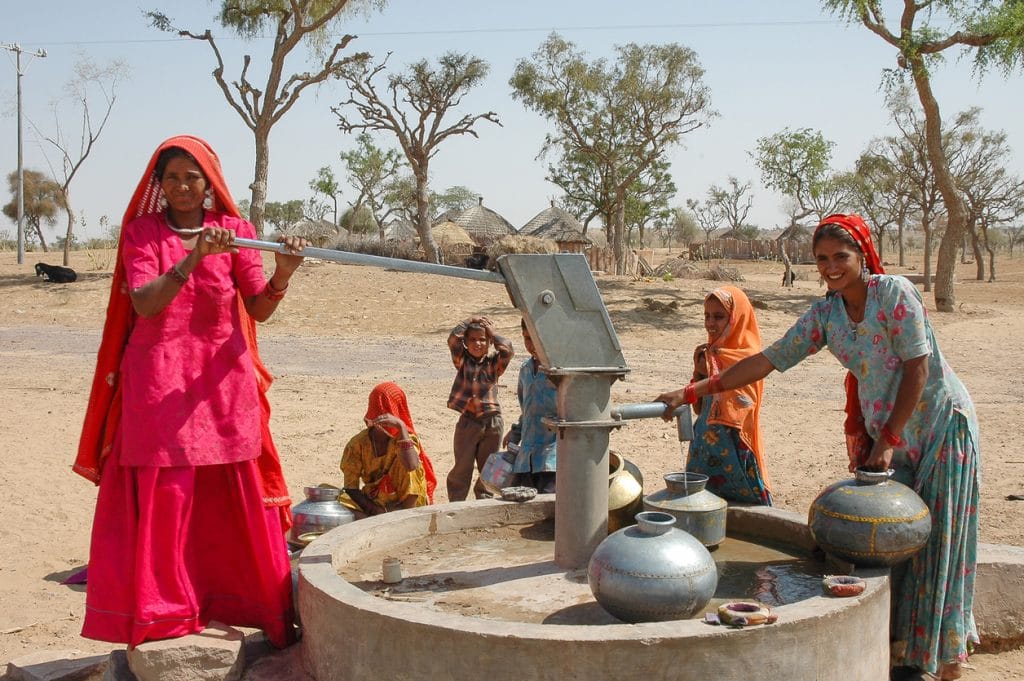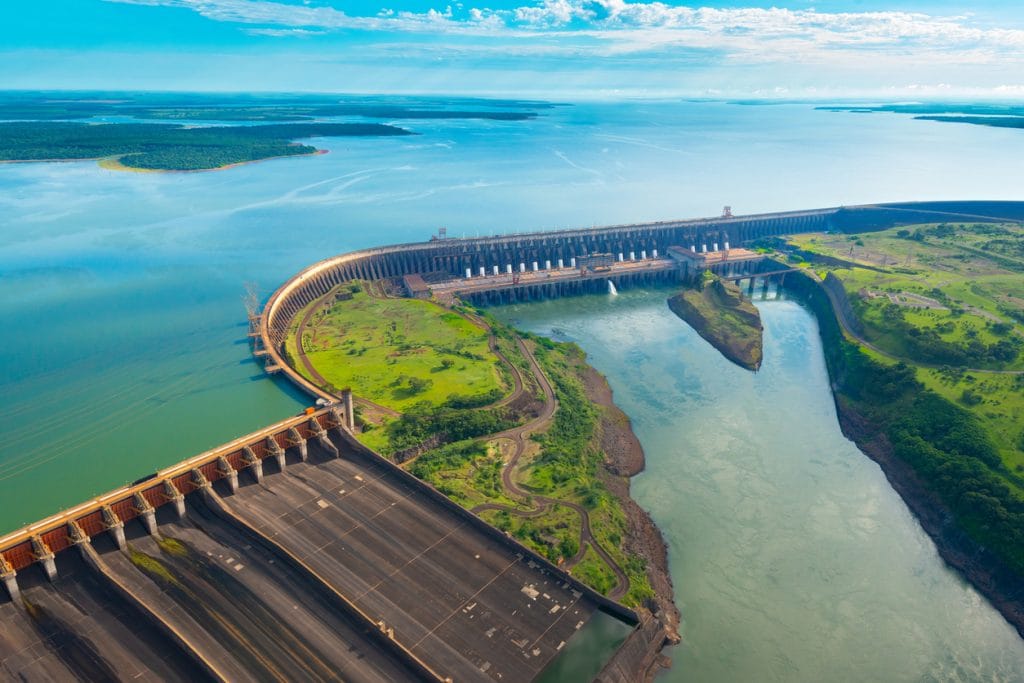
Getting the price of water right: Economics, environment, and equality
The challenge of pricing water
Water is the most important commodity on Earth; it’s embedded in almost every product bought and sold in international markets. Yet, despite its significance as a commodity, historically, it hasn’t gotten the focus it deserves at a global level, and now the situation is getting urgent.
If you live in one of the many regions around the world facing increasing droughts or where water is chronically wasted or contaminated, then you’ve probably already realised there’s something broken about the world’s approach to water. How we understand its value and price appears to be completely misaligned.

As the Earth’s climate changes, the scarcity of water in some places, or its sudden abundance in others, is reshaping the global economy and international trade.
Adam Smith first discussed “the diamond-water paradox” in the Wealth of Nations. He noted that life cannot exist without water and can easily exist without diamonds. Yet, diamonds are, pound for pound, vastly more valuable than water.
The universal availability of water at little or no marginal cost (although this is clearly changing) relative to demand means that the equilibrium price (where supply and demand meet) is supposedly low for water. On the other hand, diamonds are in high demand. They are expensive to produce, so supply is limited, and the intersection of the supply and demand curves occurs at a high price. Therefore, water is cheap, and diamonds are expensive.
However, that equation is changing rapidly. As the Earth’s climate changes, the scarcity of water in some places, or its sudden abundance in others, is reshaping the global economy and international trade.
Water should only be cheap if its supply is abundant relative to demand. But in many places, the water demand is already outstripping supply, and that’s only getting more acute. So, what does this imbalance tell us?
One answer is that water is significantly under-priced and that more efficient price signals could lead to better conservation, enhance investment in infrastructure, and improve resiliency against climate change.
That’s why, in a world with increasing water scarcity, we need a new conversation across commodities markets and broader society about our approach to water:
- Is it time we had a more responsive and sophisticated approach to pricing water?
- Could a market-based approach make water more sustainable?
- How do we do that without risking access to affordable water, an essential human right?
We don’t have all the answers, but we wanted to use this edition of ‘The Commodity Perspective’ to look at how markets and better pricing could play a more significant role in safeguarding water security and sustainability.

Why the price of water matters
According to the Global Commission on the Economics of Water, the world is facing an imminent water crisis, with demand expected to outstrip fresh water supply by 40% by 2030.
The implications of this potential crisis are far-reaching across many of the commodities markets we trade, from agriculture and energy to mining and freight. Water underpins everything.
In almost all countries, the price of water in the formal water system is well below the total cost of water production and distribution. Yet, there’s been an understandable reluctance to price water like other commodities because of its position as an essential need. The concern is that a market-based approach may make water inaccessible for poorer socio-economic groups, particularly in countries where water is already scarce.
Undoubtedly, any approach to pricing water should have a mechanism that ensures equitable access and lower costs based on circumstance. Still, there also needs to be a global evolution in how we think about the price of the water we’re using. As the climate changes and water scarcity increases, we live in extraordinary times that need a new approach.
The key is not just setting any price for water but having it reflect the economic and social value and the cost of pollution. The theory is that this would lead to less waste and more responsible consumption. On the supply side, it should also incentivise new projects and innovation to manage water security better.
Managing water risk
Having an efficient and competitive market for water would also allow businesses and investors to better manage water risk, particularly in the commodities we trade, like agriculture, mining and energy that rely heavily on water. Understanding and anticipating water costs can help businesses make more informed decisions about location, operations, and long-term sustainability strategies.
While the economic argument for better water pricing is strong, we must balance it with social and ethical considerations. Water is a basic human need, and its price needs to be affordable and ensure access for all socio-economic groups. Progressive pricing structures can help achieve this balance, ensuring countries meet essential water needs with higher usage, incurring greater costs.
Take, for example, the case of Burkina Faso. According to the International Monetary Fund (IMF), the country introduced a progressive tariff for drinking water based on the use volume, with the higher-tier users subsidising the lowest-tier and sanitation activities. Thanks to water pricing reform, access to drinking water has doubled over the past two decades— in a country where water is scarce and rainfall highly variable.

“Water is both a consequence and a cause of climate change. It represents the low-hanging fruit in our efforts to address climate change. We can achieve progress, within a reasonable period of time, if we organise ourselves well and finance it to ensure that everyone benefits”.
– Tharman Shanmugaratnam, President of Singapore & Co-Chair, Global Commission on the Economics of Water
Lessons from South America
Pricing water is a political challenge; therefore, progress has been limited over the last few decades. The Bolivian “Water Wars” in the early 2000s are just one example of what happens when you get the price wrong. In that instance, the privatisation of a Bolivian city’s water supply (Cochabamba) led to high tariffs and eventual riots on the streets.
Public pressure ensured the decision was reversed, but Bolivia is still facing enormous challenges with managing its water supply, as do many South American countries. Drought has been particularly impactful, significantly reducing crop yields for local consumption and exports and negatively affecting South American economies. For example, drought in the last two years has slashed Argentina’s soybean yields to the lowest in almost 50 years, threatening its status as the world’s largest soybean oil and meal exporter.
Although South and Central America is water-rich (the region has roughly 30% of the world’s freshwater resources). There are also clear examples of mismanagement, overexploitation and pollution that are increasing water insecurity in the region. Of the 20 largest Latin American cities, research suggests that more than 75% now face water-related stress.
However, some green shoots in South America could encourage other regions struggling with their own water challenges. Brazil has improved its water management and pricing approach since the 2014 water crisis, the country’s “worst drought in history”.
Water charges have been brought in at state-level across the country in the decade since to reflect its economic value better. Those revenues, generated primarily from industry, agriculture and utilities, have given state authorities capital to invest in infrastructure. However, as the OECD noted in a 2017 report: “Water charges in Brazil are established at levels that are too low to drive behaviour change of most users.”
This has been the fundamental issue facing governments attempting to price water more efficiently. Building a pricing model that encourages conservation and recovers costs while ensuring affordable access for all, especially low-income populations, is incredibly complex.
The problem is that we must find a solution as water is becoming scarcer and demand is increasing. We need a new multi-lateral approach to water as a commodity and a new narrative that helps consumers and businesses understand the pressing need to manage water supplies more effectively and what that might mean for water prices.

Is trading water a solution?
Most commodities already involve trading water, at least virtually. This concept of ‘virtual water’ is designed to represent the amount of water used to produce and process commodities. For example, when trading agricultural products, the water utilised in growing crops is an indirect yet integral part of the trade.
The argument goes that understanding the volume of water needed to produce a tonne of sugarcane gives us a clearer picture of water use and encourages conservation during the production of sugar or any other agricultural commodities, mining or energy. It also helps us price water in a way that’s more aligned with its economic value.
Beyond virtual water, what role do markets have in determining the price of water itself, and should it be traded more widely as it is with varying success in Southern California and parts of Australia?
Australia has implemented a market-based approach to water allocation, especially in the Murray-Darling Basin in the South-East. This system allows for the buying and selling of water rights, enabling water to be allocated to higher-value uses when needed.
Although these markets have faced criticism, they have also shown promise for managing risk and water price volatility, particularly during drought. Australia’s water markets have an estimated turnover of between $4- $6 billion AUD.
Trading water is valuable because it provides farmers and other significant water consumers with a baseline water price. It also helps policymakers and investors plan infrastructure better. Improving price signals encourages more efficient water use, and high prices also indicate when water is particularly scarce.
However, the opposition in Australia has highlighted the challenges facing policymakers globally. Creating tradeable water markets or pricing water like other commodities presents a potentially efficient solution for the problem of water scarcity and misallocation. But the issue is that water is so much more than just ‘another commodity’. It’s essential for life, and it’s deeply intertwined with social and cultural values around the world.
In many ways, the debate over water markets and pricing reflects the broader challenge of valuing and managing our most precious natural resources in an era of increasing scarcity and climate change.
A challenge that has been one of the main themes of ‘The Commodity Perspective’ for the last year.
A more sophisticated approach to pricing water is now crucial.
There’s no doubting the complexity of the ‘water problem’, but ignoring it isn’t an option, especially as it’s intrinsically linked to many other essential commodity markets. A more sophisticated approach to pricing water is now crucial. Still, there’s a careful balance to be struck between market efficiency and economic rationale on the one hand and the ethical, environmental and social challenges on the other.
